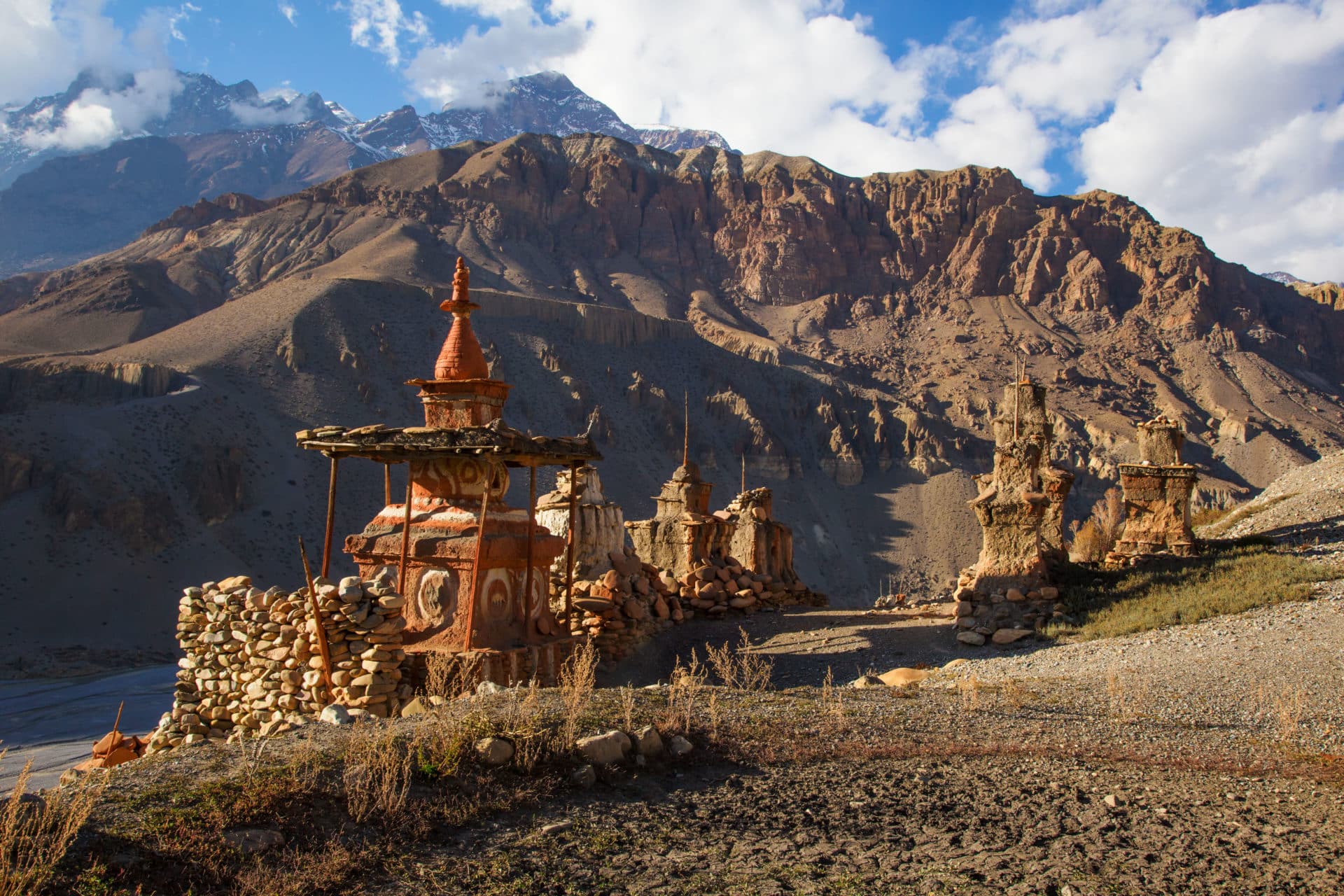
Upper Mustang Trek Difficulty
The walk to the remote Trans-Himalayan region of the nominally independent Tibetan Kingdom is known as the Upper Mustang trek. The journey to Upper Mustang offers an exciting schedule that includes breathtaking trekking through the stunning semi-arid desert with colorful rock formations, deep ravines, and snow-capped peaks all around you. This region’s history, culture, myths, and legends merge flawlessly with breathtaking nature. Along with its beauty, we will talk about the Upper Mustang Trek Difficulty.
A rare opportunity to learn about the way of life of authentic mountain people, who have lived in the Upper Mustang for hundreds of years with minimal contact with the rest of Nepal, is provided by the journey there. The rich cultural heritage of the locals has been preserved. Given that Upper Mustang is geographically a part of the Tibetan plateau, its walk is somewhat comparable to that of trekking in Tibet.
However, within the confines of Nepal, the Mustang district existed as an independent kingdom until 1950. In the former capital of Mustang known as Lo Manthang, the last ruler still resides.
Similar to how the district was only accessible to hikers who were not Nepali fifteen years ago, access is currently quite limited. Trekkers require special trekking permission and must travel with a government-appointed representative to visit Upper Mustang.
Trip Highlights of Upper Mustang Trek
- Aerial tour from Kathmandu
- Examine the Tibetan-influenced culture and tradition Up-close views of the Annapurna, Nilgiri, and Dhauligiri mountains
- Chooser cave with four stories
- The Buddhist temples constructed in the 13th century Lo Manthang, an independent state, is explored. The Kali Gandaki Valley is the deepest gorge.
- A trek that takes you past a number of caverns, monasteries, gompas, Chortens, and rock carvings.
Upper Mustang Trek Difficulty
It is difficult to go to the Himalayan regions. The Upper Mustang journey is the same. This is a moderately challenging journey that traverses a variety of terrains with frequent ups and downs at steadily high altitudes. In addition, a number of reasons are making the voyage more difficult. So let’s talk about some of the challenges of the Upper Mustang Trek.
Altitude
The high altitude presents one of the main challenges when walking to the upper mustang. The walk is a little less difficult than other high-altitude treks because the Upper Mustang is located below an altitude of 4000m. The trek’s highest point, Lo Manthang, is 3800 meters above sea level. The journey to Mustang is challenging even if it is at a moderate altitude.
Altitude sickness is a disorder that can be brought on by elevation. Over 2500 meters above sea level, altitude sickness can occur. The oxygen level decreases as altitude increases, making breathing more challenging.
However, even if you get altitude sickness symptoms in the upper Mustang, they are rarely severe or complicated. You might have a number of symptoms, including nausea and mild headaches. Anyone of any age could experience it due to the new environment’s comparatively low air supply.
Trekkers should use acclimatization measures at higher altitudes to reduce these issues. You might take a break if you don’t feel like going on with your walk or if your body isn’t allowing you to ascend to a higher height.
Walking Hours
Walking hours might be a challenge for hikers on the Upper Mustang Trek. You must go a considerable distance on a difficult uphill and downhill trail because Upper Mustang is located at an elevation of more than 3000 meters.
The distance you must walk, however, may affect how long it takes you to walk. For example, some days 3–4 hours of walking are acceptable while other days require approximately 7 hours of nonstop walking.
Upper Mustang is lower in elevation than any other high-altitude hike, but walking there is still challenging. Similar to this, the Upper Mustang journey takes between 15 and 18 days, depending on the itinerary. You will therefore be exerting yourself by walking for an average of 5 to 6 hours every day for around 15 to 18 days.
Therefore, for both novices and expert walkers, 6-7 hours of nonstop trekking in the Himalayas is difficult and painful. Therefore, traveling in an Upper mustang requires both physical and mental health.
Trekking Trails
The Upper Mustang Trek’s trail itself is difficult, in addition to the altitude and the amount of walking required. Most trekking trails are quite wide. Some sections, though, are challenging and unpolished. One of them is the route that crosses the Kali Gandaki.
The paths are frustrating and challenging. The roadways are also too small and cramped for walking. On the other hand, staring downhill alone can make one feel dizzy.
You will be trekking alongside the Kali Gandaki Gorge, which is the deepest gorge in the world. Sometimes the entire path gets dusty, and the windy weather makes it difficult to see the way. Additionally, during the winter, the temperature drops below freezing, and the snow may obstruct the paths. Consequently, the mustang’s trial is somewhat difficult.
Climate
Another element that makes the travel to Upper Mustang Trek difficult is the climate. Mustang has the same four distinct seasons as the rest of the nation. All four seasons of the year are suitable for trekking. However, there are a few things to think about before hiking in every season.
The monsoon overlaps summer with rains during the summer months, making the routes slick and difficult to navigate. In addition, winter is extremely frosty.
Upper Mustang has below-freezing winter temperatures, making the trek challenging. The walk to Mustang might be most enjoyable in the autumn and spring. As a result, the comfort of trekking is also influenced by the local climate.
Altitude and Mountain Sickness
Acute exposure to low oxygen levels at high altitudes is what causes altitude sickness, also known as acute mountain sickness (AMS). It generally happens above 2500 meters in elevation. However, hiking to the Upper Mustang does not provide a significant altitude problem.
Despite being a journey to the Himalayan zone, you will spend the majority of the day below 4000 meters. There is a chance that you will experience a variety of altitude sickness symptoms, such as headache, nausea, and vomiting, but there is a lower chance that you will experience serious problems.
Upper Mustang Trek is a straightforward route to the Himalayas, but it’s nonetheless difficult for novices and those making their first ascent at a high altitude.
The atmospheric pressure thins and the oxygen content declines as you ascend higher. Your body is abruptly exposed to unfamiliar conditions, which could make breathing difficult. The main cause of altitude sickness is an inadequate acclimatization process.
Even when one is well, Mountain sickness can occasionally strike. Similar issues include the possibility of vomiting, nausea, headaches, appetite loss, and most frequently fainting.
The severity of the mountain sickness will depend on the individuals and their approach to the trail. One can trek in the Nepalese Himalayas in a number of methods without developing altitude sickness.
Measures For Upper Mustang Trek Difficulty
- Up to 4-5 liters of water every day
- Trek without rushing.
- Avoid consuming any items that could upset your digestive system and adhere to the schedule and hours designated for that day.
- Consume lots of soups
- Avoid drinking alcohol while hiking.
- Pay attention to your journey guide.
- Don’t forget to pack Diamox or other medications to treat mountain sickness symptoms under a doctor’s guidance.
- Take frequent breaks when traveling.
- The best defense against this disease might be acclimatization. Give yourself enough time to become used to a new setting. Aside from drinking lots of water, another strategy to prevent altitude sickness is to pay attention to your body, walk carefully if you’re weary, and drink enough of fluids. Don’t push your body or rush for it.
Upper Mustang Trek Weather Difficulty
Geographically speaking, Mustang is situated in a dry region. As a result, it rarely rains and is dry for the most of the year. However, Upper Mustang is a windy region, making it difficult for travelers to advance on their trek. As a result, experiencing windy weather may be unfamiliar to certain people. In order to avoid the chilly wind, we advise you to wear at least two or three layers of clothing.
Upper Mustang Weather in March, April, and May
The spring months in Nepal are March, April, and May. It is greener than ever at this time. This time, the scenario is fantastic because it offers a clear view of the Himalayan mountain ranges. After autumn, spring is another excellent time to hike in Nepal’s upper Mustang.
Spring brings out the best in the Upper Mustang, showcasing the lovely scene of natural landscapes as well as the breathtaking image of daybreak striking over the peaks of the Himalayas.
The windiest season of the year is, however, April. You are directly struck by the wind. Therefore, it is best to take good care of your clothing. Despite the mild weather, it is still necessary to wear multiple layers of clothing. Springtime brings warmer days and cool morning and evening temperatures.
In contrast, the temperature in the spring varies from -6 to -2 degrees Celsius at night and 16 to 22 degrees Celsius during the day. It is, all things considered, one of the best seasons to visit the Mustang. However, there are a lot of tourists visiting. If lodging is not reserved in advance, a problem could develop.
Upper Mustang Weather in June, July, and August
In Nepal, the months of summer and monsoon are June, July, and August. Additionally, Mustang is one of the best locations for trekking even during the monsoon because of its sheltered location and infrequent rainfall. Similarly, it continues to be hot during the day and cold at night.
Typically, when we think of summer, we picture rain and sweltering heat. For the vast majority of Nepal, this is accurate. The Upper Mustang, however, is not affected in the same way.
In contrast to other regions of the nation, the upper Mustang doesn’t get much rain in the summer. The hikers will have more free time throughout the summer because it is often longer. Similar to that, the trek-friendly temperature ranges from 13 to 20 degrees Celsius.
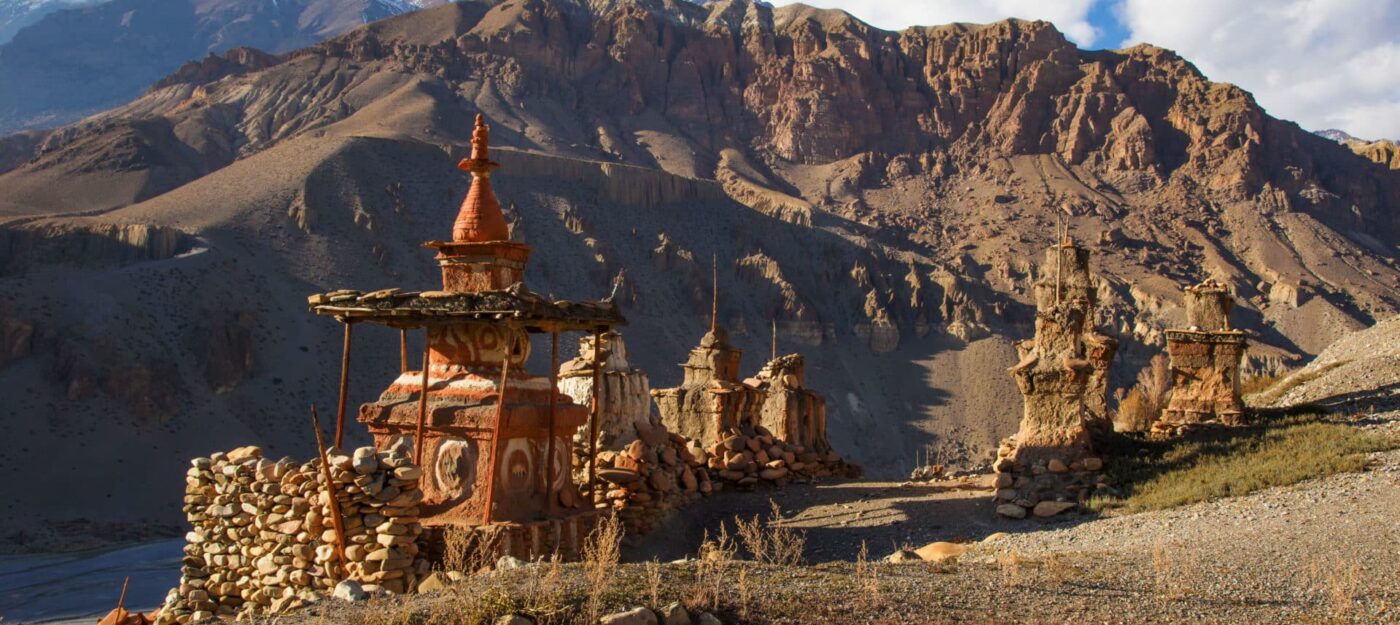
On the other hand, the lower portion of the Mustang could experience minor precipitation, making the trail slick and muddy. However, the upper portion is still visible and offers an amazing perspective.
The vistas in Mustang at this time of year are breathtaking for those who daydream about the splendor of nature after a rain. Hundreds of tourists visit the upper Mustang during this time because the natural vegetation is at its best.
Upper Mustang in September, October, and November
In Nepal, the autumnal months are September, October, and November. Likewise, in Nepal, it is one of the most popular times to go trekking. In Nepal, autumn has the highest number of tourists of all seasons. Autumn is considered to be the greatest season for high-altitude treks due to the pleasant weather and temperatures, and the same is true for the Upper Mustang region.
Trekkers will enjoy the beautiful weather at this time of year, with clear blue skies and a clear view of the Trans-Himalayas, Annapurna range, Dhaulagiri, Machhapuchhre, and Nilgiri mountains.
Additionally, the upper and lower Mustang have temperature variations between 12 and 20 degrees Celsius, making them ideal for trekking and other adventurous activities. It’s not just about the scenery when you visit the upper Mustang during this month of the year—also it’s about the festivals. In Nepal, the celebration takes place in the autumn.
While in Upper Mustang, you may see how Nepali festivities are celebrated. As a result, the colorful festivals and celebrations will take place in complete harmony with the spectacular surroundings.
Upper Mustang in December, January, and February
The winter months in Nepal are December, January, and February. Trekking and other adventurous activities are least popular at this time of year in Nepal. The Upper Mustang shares the same situation. The number of visitors to Upper Mustang is lower at this time of year. Even in the Mustang region, winter remains the coldest season of the year.
During the winter, even the inhabitants of the Upper Mustang themselves migrate to lower areas. Winter is the least tolerable season for the climate and temperature. As a result, trekking in Upper Mustang is all but impossible due to the frigid weather.
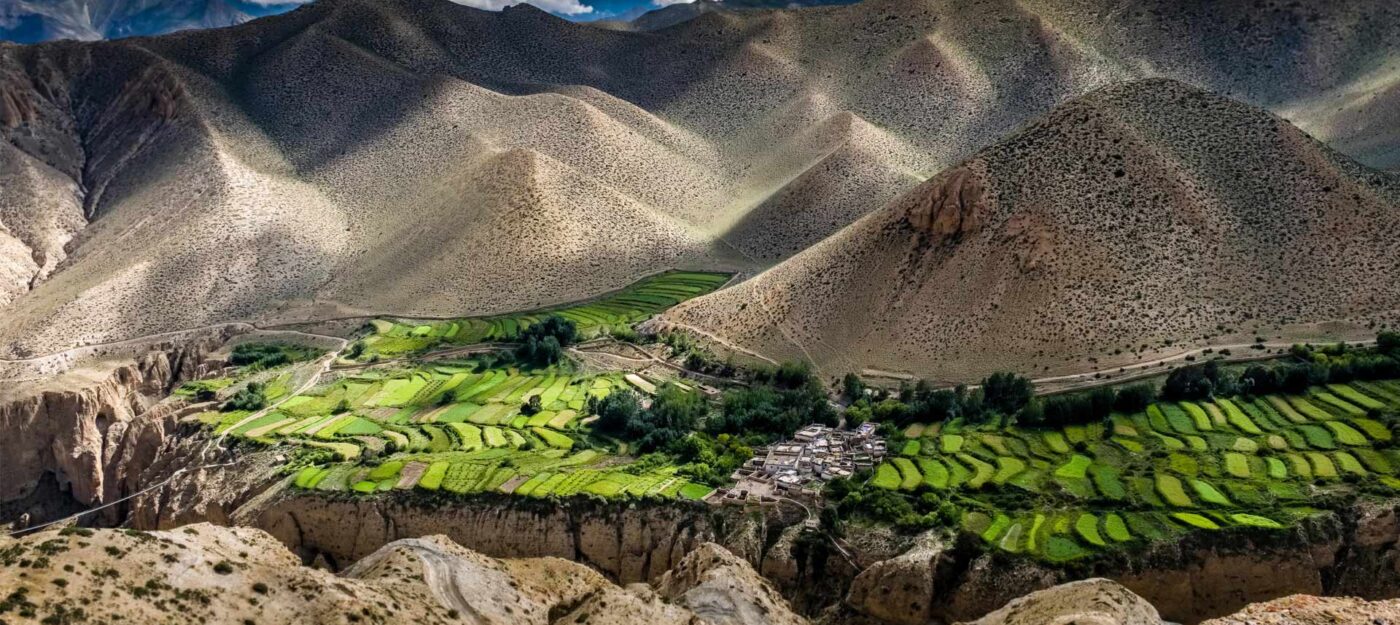
The regions get colder in the winter the higher up the hike one goes. During this time of year, the roads are blanketed in snow and it gets down into the negatives. During the day, it is between 0 and 5 degrees; at night, it is between -25 and -20 degrees. Additionally, sometimes the paths may be shut due to excessive snowfall. Trekking to the lower Mustang is possible in the winter, but to the upper Mustang is more challenging. With the right equipment, the trek will be difficult but not impossible.
Trekking trails of Upper Mustang
The Upper Mustang walk is unlike any other journey because of its striking semi-arid scenery and distinct Tibetan traditions. A walk here emphasizes both breathtaking scenery and cultural exploration. Every path we take and every community we pass through has different priorities. The list of hiking paths in the Upper Mustang is provided below.
- Kagbeni
- Tagabe
- Chhusang
- Chele
- Ghyakar
- Samar
- Syangboche
- Ghiling
- Ghami
- Tsarang
- Lo Manthang
Kagbeni
Unquestionably, Kagbeni is one of the medieval settlements that sits at the intersection of four important trade routes. It is located where the Jhong and Kali Gandaki rivers converge. Because Kagbeni serves as the entrance to Upper Mustang, visitors must first present their permits here. Kagbeni is a charming, atmospheric town with winding streets, typical mud-brick homes, and communal courtyards where residents collect water. Also noteworthy are the odd “ghost eater” figures and the magnificent gompa from the 15th century.
Tangbe
On your way to the upper mustang, pass through the charming settlement of Tangbe. Between Kagbeni and Chgusang is this settlement. Trekkers who are traveling to or from Chhusang might make a quick diversion to Tangbe. It is surrounded by apple orchards and agricultural fields and is situated on the banks of the powerful Kali Gandaki. Similar to that, the main draws of this village are its historic chortens, constrained cobbled alleyways, and picturesque buildings.
Chhusang
On their way back from Lo Manthang, trekkers frequently spend the night at Chhusang. Additionally, Chhusang is a well-liked lunch stop en route to Upper Mustang. The settlement, which is connected to Kagbeni by a road, has a lot to offer tourists. In addition, it includes stunningly colored cliffs that span the Kali Gandaki and steal the show. You can locate a neighborhood-shared jeep right here and leave from there.
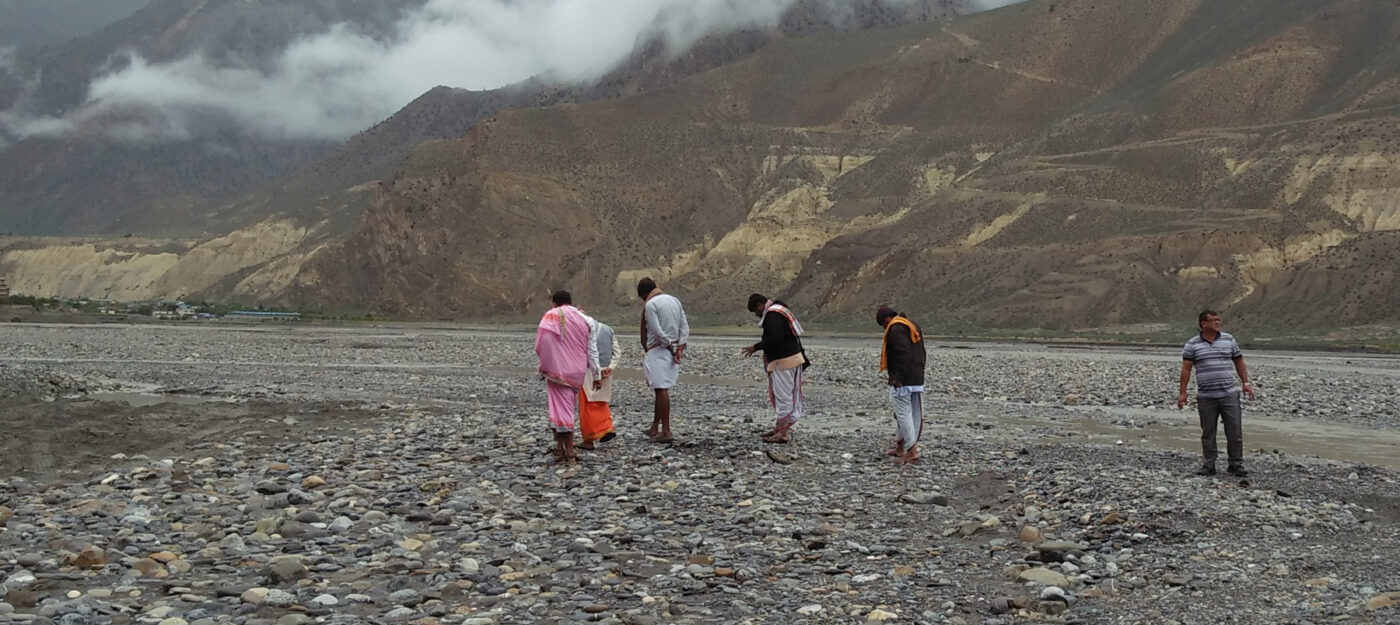
Chele
From Chhusang, the trail follows the river and the road. A steel bridge will allow you to see some prehistoric caves. The line of “windows” carved out of the cliff face above is also visible to the hikers. The village of Chele can be reached by ascending a short, steep slope from the riverbed. Chele is a charming community with a number of typical Mustang homes, a few lodges, and lovely scenery.
Ghyakar
Trek from Chele to the massive cliffside perched above a deep gorge on the way to Samar. To get to Ghyakar, cross the suspension bridge over the gorge. In the days before roads, there was little to no trekking traffic in the quiet, wooded village of Ghyakar. This is a small local community without a hotel or other lodging alternatives.
Samar
On the route to Syangboche, there is a little community called Samar with only a few houses and lodges. Samar is a typical lunch stop rather than an overnight stay. However, if it is convenient for their trek itinerary, some hikers choose to spend the night here.
Syangboche
Another small community with a constrained selection of lodges is Sayngboche. Depending on your schedule, this settlement can be a convenient overnight stop for certain hikers. There are other off-road trails via Chungsi Cave and a road track that connects Samar and Syangboche via Behna La and Yamda La.
Ghiling
One of the larger communities in the area is Ghiling. In this village, there is also a magnificent monastery from the fifteenth century. The settlement, which is tucked beneath a rocky mountain, is bordered by a patchwork of farms. In Ghiling, there are also lodges and native houses.
Ghami
Ghami is a spot that should be stopped at and further explored when trekking to Upper Mustang. Similarly, Ghami has access to lodges and neighborhood homes, unlike other locations. In the heart of Ghami, there is a prayer wall and a collection of vibrant Chortens. Similarly, the 305 m-long main wall outside the settlement is the longest in Mustang. A magnificent collection of substantial Chortens lies beyond the wall, blending in perfectly with the craggy mountains in the distance.
Tsarang
After Lo Manthang, Tsarang is the second-largest settlement in Upper Mustang. The King’s Palace, which once served as the country’s capital, is still visible. The 16th-century monastery, a central red structure encircled by striped walls, is still standing at Tsarang. Tsarang is a great day trip destination for hikers.
Lo Manthang
The walled city of Lo Manthang, which serves as Upper Mustang’s capital, is quite amazing to see. Everyone is drawn to this area because of the courtyards with water wells and rows of bulbous Chortens that suddenly appear from the tiny passageways. Spend a day at Lo Manthang to learn more about its culture, traditions, and stunning natural surroundings.
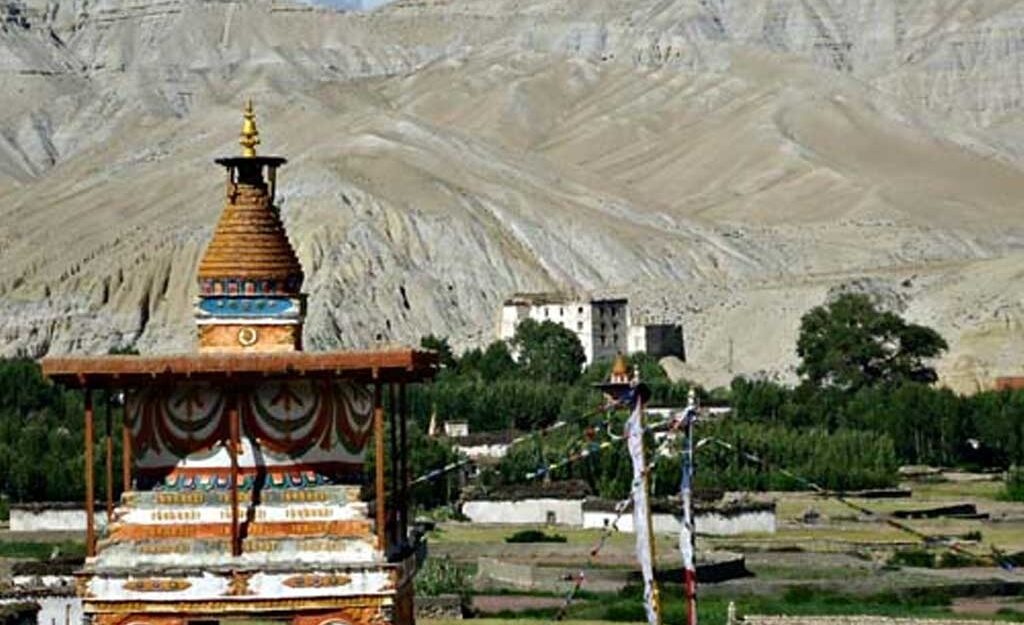
Physical Fitness For Upper Mustang Trek
Upper Mustang is a moderate-level trek. The trek is not hard and intense like that of other high-altitude treks. So, it can be done by both experienced trekkers as well as novice trekkers. However, before trekking to any of the places above 2500m, it is very important to be healthy and physically fit for the trek.
As the highest altitude of the trek is only 3800m at Lo Manthang so, this trek will be easier compared to other treks. However, the trekkers need to be prepared for any circumstances that occur while trekking.
Similarly, you can get ready for the journey by doing physical training and exercises that improve your cardiovascular fitness. Take part in sports including jogging, swimming, running, trekking, and brisk walking. Prior to the date, you begin your journey to Upper Mustang, be sure to walk 5 kilometers in just 30 minutes. Upper Mustang is a moderate trek all around. So anyone can discover the beauty of this location.
